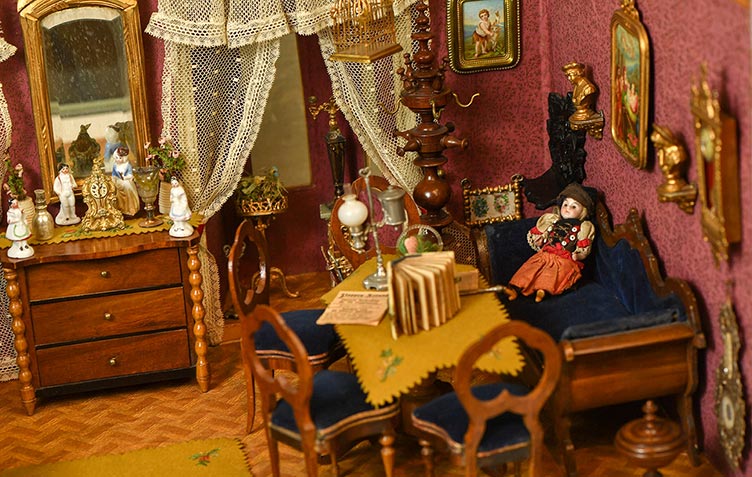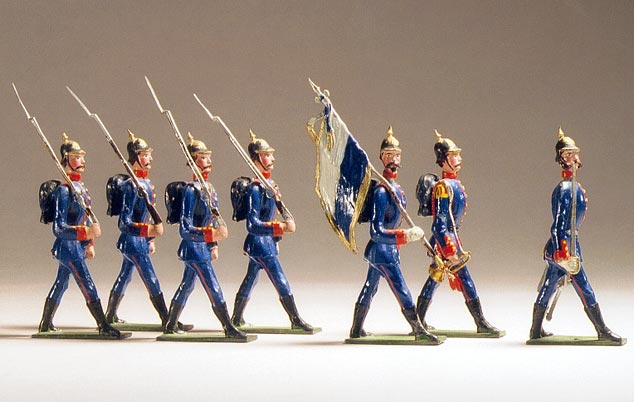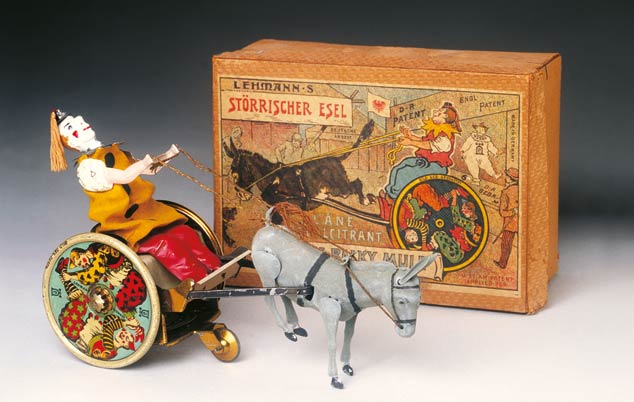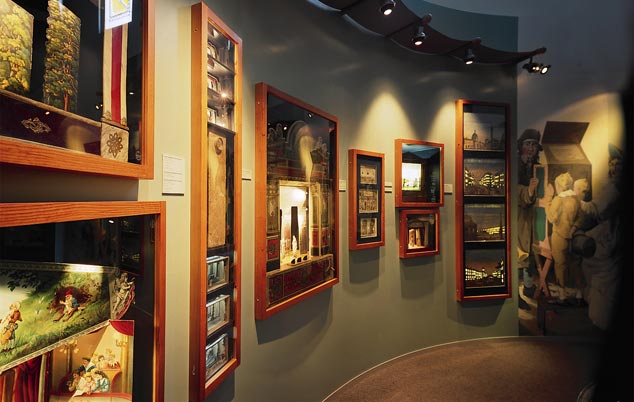
Dolls, Parlors, Kitchens
Traditional educational principles aimed to train little girls through play for their later life as housewives. A succession of doll kitchens from four centuries shows how precisely the diverse social and regional ways of running a household were reproduced. Selected doll kitchen utensils also illustrate food preparation techniques. Homemaking of course would also include shopping in the collection's richly equipped market stalls and shops.
Doll parlors and dolls show how girls were integrated through play into the culture of the home, family and fashions. The doll parlors on display range from the Biedermeier period through Historicism and Art Nouveau to the 1940s. They not only reflect changes in lifestyle, but provide a detailed picture of middle-class family life. The well-stocked fashion shops are also vivid cultural documents. Finally, a large number of items document how dolls evolved over the period from around 1750 to the mid-1950s, from figurines intended only for modeling fashions and display to playthings for children.

Games with Figurines
A room with a fine Rococo stucco ceiling that survives from the original structure is the setting for historical free-standing figurines made of tin, paper, composites, celluloid and plastic. Early examples from workshops in Nuremberg and Fürth primarily represent scenes and other subject matter from everyday life. They document the expertise of the local tin founders and engravers who made Franconia a Mecca for nineteenth-century tin figurine enthusiasts.

E. P. Lehmann Toys
E. P. Lehmann Patentwerk is one of the greatest names in toy history. Founded in 1881 by Ernst Paul Lehmann in Brandenburg an der Havel, the company quickly earned international fame with its inventive mechanical metal toys. Cars, trucks, aircraft and a plethora of witty movable animal and human figurines enchanted children for decades. The family firm relocated to Nuremberg in 1950 and was best known today for its very successful Lehmann Grossbahn (LGB) trains – the "Lehmann Big Railway."
The permanent exhibit, set up in 2002, provides a colorful and varied panorama of the company's history. With far more than 300 items on display, this is the world's most important collection of famed Lehmann mechanical toys.

Optical Toys
Optical toys before the modern-day media flood: Until the end of the nineteenth century, children and adults alike satisfied their visual appetites with a wide range of media that are almost forgotten today. Shadow plays and paper theaters within the home dramatized stories for young and old. Traveling exhibitors at fairs enticed spellbound audiences into foreign worlds with peep shows and magic lantern projections. Smaller toy-scale versions – many made in Nuremberg – provided entertainment and edification for the whole family in middle-class homes. Pop-up perspective scenes and backlit dioramas provided charming three-dimensional depictions of historical events and sites.
A new quality of three-dimensional illustration arose around 1850 with stereoscopic photography. Exotically-named phenakistoscopes, zoetropes and praxinoscopes gradually taught visual images to move. But not until cinema was invented at the turn of the twentieth century did the universe of moving pictures really come to life.
This part of the Museum offers a fascinating glimpse of the captivating world of optical toys, along with a chance to explore the workings of zoetropes and stereoscopes yourself.


